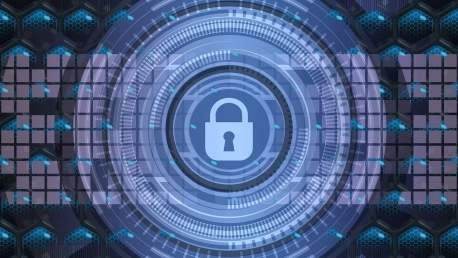In today’s business world, embedded with digital systems, grasping IT risk management is imperative. Cyber threats are advancing rapidly, demanding that enterprises prioritize cyber resilience. Kris Lovejoy, a leading expert at Kyndryl, sheds light on effective cybersecurity strategies. This crucial advice guides companies through the complexities of IT defense, advocating for a proactive stance on cybersecurity. Organizations must adopt advanced measures to ensure they are well-armed against the ever-changing cyber risks. Lovejoy’s expertise is invaluable in reinforcing current security methods and preparing businesses for potential digital threats. Understanding and applying these strategies has become essential for maintaining a secure and resilient operational framework in the digital age.
Establishing Risk Tolerance in Cybersecurity
The cornerstone of a sound cybersecurity strategy begins with a clear-eyed assessment of a company’s risk tolerance. It is this understanding that predicates an organization’s response to the multiplicity of online threats. Lovejoy underscores the imperative of bringing IT security managers and business stakeholders to a consensus on the level of risk acceptable to the company. By demarcating this critical threshold, what constitutes “good” cybersecurity can be tailored to align seamlessly with the company’s objectives and appetite for risk. This strategic alignment is not just foundational but instrumental in dictating the scale and scope of security measures that an organization will implement.Crafting an effective cybersecurity strategy is contingent upon the lexicon of risk that an organization is willing to engage with. Lovejoy advises that without this explicitly defined risk appetite, efforts in cybersecurity may either fall short or exceed beyond what is pragmatically necessary. It is in navigating this balance that a cybersecurity strategy finds its efficacy, and operational directives can be drawn to protect the company’s assets without impeding its pursuit of innovation and growth.
Articulating the Value of Cybersecurity Investments
Investing in cybersecurity safeguards a business’s continuity and integrity. Nonetheless, Lovejoy cautions against believing that financial outlays guarantee flawless cyber defenses. A Chief Information Security Officer (CISO) must do more than implement stringent security protocols; they must also convey to leadership what is realistically achievable. Misconceptions can lead to a misplaced sense of security or disappointment at the impossibility of absolute cyber safety.Cybersecurity’s value isn’t solely in technological investments; it also requires skilled personnel and efficient processes, united to preempt, identify, and counteract threats. The CISO’s role is both tactical and strategic, fostering an organizational awareness that cyber investments are crucial for maintaining business operations amidst digital threats. This approach ensures the firm’s defenses evolve with the changing cyber threat landscape, keeping the company resilient against potential attacks.
The Role of Generative AI in Cybersecurity
Generative AI’s advent promises a seismic shift in the cybersecurity domain, ushering in capabilities that can potentially recalibrate the field of counter-cyber threats. However, Lovejoy prefaces this potential with a cautionary note—the necessity for responsible usage. While these powerful AI tools can perform tasks ranging from simulating cyber attacks to automating defense mechanisms, the utilization of GenAI must be bounded by governance that ensures its power does not fall into nefarious uses.The move towards integrating generative artificial intelligence into cybersecurity is inevitable, given its potential to preemptively identify and neutralize threats. The imperative, then, is not to shun these advances in AI, but to embrace them within a framework that promotes their responsible use. This means implementing stringent controls that manage the risk of misuse, and, as Lovejoy suggests, making ethically sound and legally compliant use of GenAI a priority in designing future cybersecurity systems.
Simplifying IT Environments: A Strategic Imperative
In today’s strategic IT landscapes, simplicity isn’t just a preference—it’s crucial. Lovejoy advocates a ‘critical services first’ model for cybersecurity, suggesting that safeguarding key operations can create a domino effect, bolstering security as a whole. This approach targets the most vital areas to reinforce resilience in a cost-effective, resource-savvy manner.But simplifying IT isn’t just about setting priorities; it also involves streamlining existing security controls. This consolidation improves protection and helps manage costs. Lovejoy believes that striving for simplicity transcends the technical realm, urging a shift toward a culture that embraces reducing complexity. Such a shift includes automating and refining processes, ensuring that only indispensable systems remain, leading to a more secure and efficient IT environment.
Leveraging AI and Machine Learning for Security Efficiency
With the escalation of cyber threats, AI and machine learning tools are becoming indispensable in the identification and neutralization of security risks. Lovejoy points to the next frontier in this technological advance: generative AI, which holds the potential to transform security paradigms. However, she implores businesses to tread cautiously, asserting that the power of generative AI needs to be harnessed with adequate checks and balances.The introduction of generative AI within organizational defenses should be a meticulous process, infused with the understanding that while such tools can dramatically improve efficiency, they could also introduce new vulnerabilities if not properly controlled. Lovejoy sees a future where AI-driven systems operate with embedded controls, ensuring they function as intended, bolstering security mechanisms and offering an edge in the ever-evolving battle against cyber threats.
The Critical Need for Employee Education in Cybersecurity
Acknowledging the ever-persistent human factor in cybersecurity, Lovejoy reiterates that employees often serve as the first line of defense—and the most vulnerable link—in the security chain. It’s a continuous challenge to inculcate a culture where security-conscious behavior is second nature. Consequently, ongoing education is imperative, ensuring every member of the organization is equipped with the knowledge and tools to mitigate risks.Lovejoy champions the idea that cyber resilience is not solely about systems and software but involves people at its core. Exercises intended to simulate security breaches can instill a level of preparedness that theoretical knowledge alone cannot. By engaging in such training, employees not only sharpen their skills but also contribute to a more robust security posture, one that is resilient not just on paper but in practice, in the face of real-world cyber threats.
Ethical AI Implementation in Autonomous Security Technology
The effective deployment of AI in security infrastructures must be undergirded by an ethical framework. Lovejoy underscores the importance of upholding principles of ethical AI usage and embracing standards that guide the development and implementation of autonomous technologies. It is incumbent upon organizations to question not just the capabilities of AI but the integrity of the data it processes and the consequences of its deployment in real-world scenarios.The charge for responsible AI in cybersecurity is a clarion call for not only CISOs but all stakeholders involved in AI development to ensure their solutions are transparent, equitable, and free from intrinsic bias. As autonomous technologies continue to evolve, the emphasis centers on risk-sensitive adoption and a vigilant stance towards the input data, ensuring that the ‘garbage in, garbage out’ paradigm does not undermine security efforts that rely on AI systems.
Risk Management Process: Protection, Readiness, and Recovery
Imbuing a cybersecurity strategy with adaptability requires a comprehensive approach to risk management. Lovejoy articulates the necessity for protection schemes, preparedness plans, and recovery paths that collectively define a strategy’s fortitude. Establishing a clear picture of a business’s risk tolerance is instrumental in forming such an encompassing framework, enabling CISOs to navigate the complexities of threat management with precision.An organization’s resilience hinges not on the mere presence of defenses but their efficacy in the face of actual disruptions. Thus, a coherent framework, based on a thoroughly understood risk appetite, provides the blueprint for such a strategy. It forms the backdrop against which policies and protocols are crafted, ensuring that security mechanisms are responsive to the business’s needs and robust enough to withstand the tide of cyber disruptions.
Data Quality’s Importance in Cybersecurity
The quality of data serves as the keystone in any cybersecurity structure. Lovejoy defends the adage ‘bad data in, bad data out’, noting its particular resonance in security systems powered by AI, where data’s integrity is paramount. Ensuring data provenance—knowing where data comes from and how it has been handled—is necessary, with the authenticity of data forming the foundation of trust in cybersecurity operations.Being vigilant about data quality is not a trivial pursuit but one that is central to the security of modern, data-reliant businesses. As organizations increasingly lean on AI to bolster their cyber defenses, the veracity of the data fueling these intelligent systems cannot be overstated. In the end, it is not just about having data but having data that one can rely upon—a principle that anchors effective cybersecurity practices and enhances the resilience of the IT infrastructure against the wiles of cyber threats.









